The tasting notes for one of our favorite Pinot Noirs describe what’s in the bottle as:
“Subtle and nuanced, this wine unfolds with layers of perfumed red berries and sweet baking spice. Delicate hints of cinnamon, clove, and cedar, dance from the glass, a nod to the well-integrated oak. The flavors unfurl with juicy red cherry and pomegranate, alongside hints of orange pekoe tea, hibiscus flower, and pink peppercorn.”
Photo courtesy of the Wine & Spirit Education Trust.
We’ve drunk that wine many times, and to be honest, never once gave a thought to baking spice, pomegranate or pink peppercorns. In fact, we don’t believe we’ve ever thought of pink peppercorn after tasting any wine.
So we suggest that when you’re out winetasting and the server mentions road tar and alfalfa, take it with a bit of…well, salt would be bad idea, but don’t worry if you can’t recognize anything you were told. Which is not to say that you shouldn’t consider the aromas and tastes that come from your glass.
- Remember, it’s your mouth. You can’t be wrong. Actually, you can if you’re tasting some of the flavors only found in red wines when you’re sipping a white, or vice-versa. So if you think you’re tasting, say, dark fruits or tobacco in a Sauvignon Blanc, you either have a cold or you’re really off base. But if you close your eyes and let smell and taste memories take over, you’ll be correct, on your own terms.
- Listen to others. Of course, other people around you have their own memories. If you’re tasting cherries and someone else says raspberries, they’re both red fruit, so maybe you’ll get a hint of raspberries, too. But what if he says he can detect green peppers. That’s often a sign of underripe grapes and you may not have picked up on that taste, but immediately recognize it when it’s pointed out to you.
- In addition, what you’re tasting is influenced by many factors besides the wine. You will taste different things when you’re pairing a wine with a meal than you do in a tasting room. Your mood will affect your tasting abilities. So will your health. Fatigue, time of day, and the perfume some thoughtless visitor is wearing at the next table all have an effect.
- Not everyone can taste everything. It’s just a biological fact that some people have taste receptors for certain chemicals in specific wines and others don’t. It is often written that Syrah has a definite taste of white pepper. That may be so, but not for us. It seems that a chemical called rotundone is found in white pepper and in low concentrations in Syrah grapes. If you don’t have the capability to taste just a bit of rotundone, you won’t find it in your wine glass.
- Don’t fake it. If the “official” description says a wine tastes of honeysuckle and you can’t find that, but do taste pineapple, stick by your guns. Maybe honeysuckle was dominant at the time the description was written but it has faded now, with pineapple coming out as the wine aged. There’s no sense convincing yourself that you taste something you don’t, just to get along by going along.

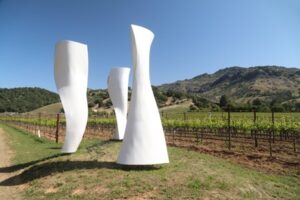
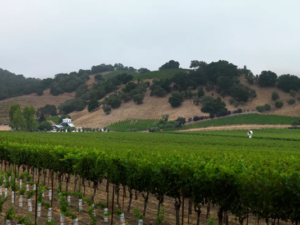
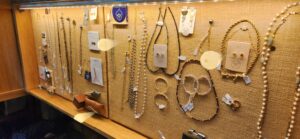

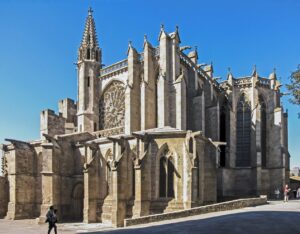
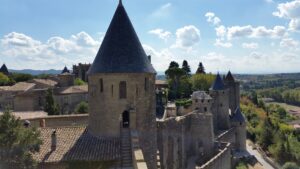
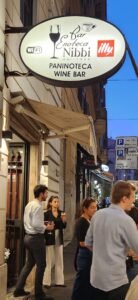
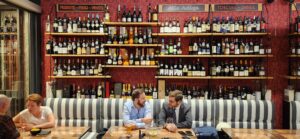
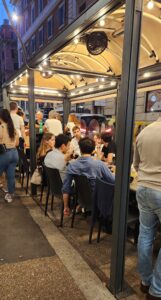 ething going on. We’ve seen large parties, with bottles and platters seeming to arrive every ten minutes. There was a fellow on his PC writing what must have been the Great Italian Novel, made up of equal parts of inspiration, wine and cigarettes. And there was a woman enjoying a glass of wine by herself without getting hassled (try that in New York!).
ething going on. We’ve seen large parties, with bottles and platters seeming to arrive every ten minutes. There was a fellow on his PC writing what must have been the Great Italian Novel, made up of equal parts of inspiration, wine and cigarettes. And there was a woman enjoying a glass of wine by herself without getting hassled (try that in New York!).